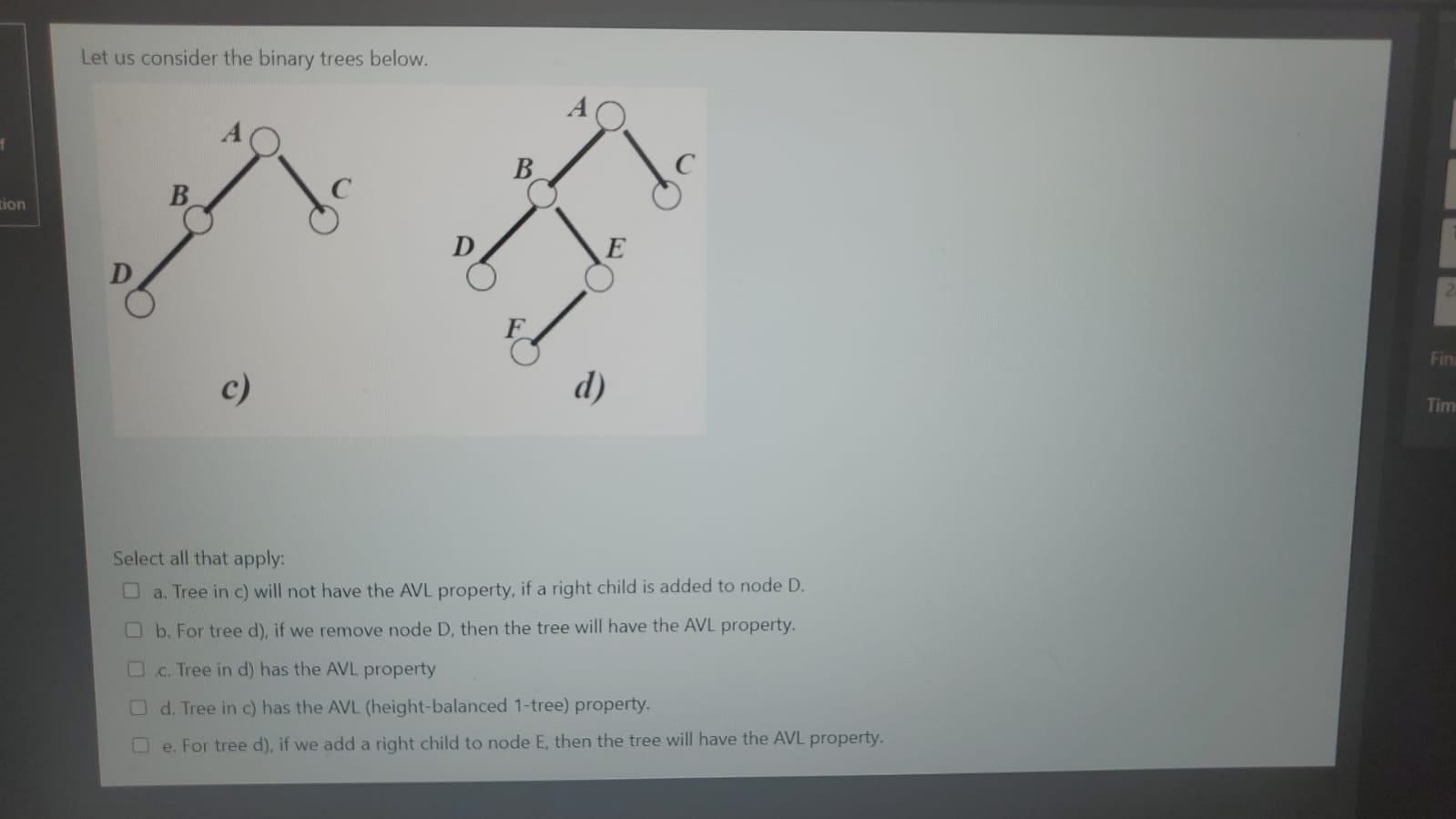



Let us consider the binary trees below. . B D E c) d) Select all that apply: a. For tree d), if we remove node F, then the tree will have the AVL property. b. For a binary tree that does have the AVL property. If the property is violated after inserting one node, then the property can be restored using an algorithm (based on rotations) that runs in quadratic time cost (O(N2) where N is the number of nodes. I c.Tree in c) will not have the AVL property, if a right child is added to node C. d. Both trees C) and d) have the AVL (height-balanced 1-tree) property. e. For tree d), if we remove node C, then the tree will have the AVL property. Let us consider the binary trees below. B E a) b) Select all that apply: a. For tree a), if we add a left child to node C, then the tree does no longer have the AVL property. b. Tree in b) will not have the AVL property, if a left child is added to node B c. Tree in b) will not have the AVL (height-balanced 1-tree) property, if we remove node B O d. For tree a), if we add a right child to node D, then the tree does no longer have the AVL property. e. For a binary tree that does have the AVL property. If the property is violated after inserting one node, then the property can be restored using an algorithm (based on rotations) that runs in linear time (O(N) where N is the number of nodes). a Let us consider the binary trees below. 1 of 10 stion E 19 F 28 Finish a! e) f) Time left Select all that apply: O a. For a binary tree that does have the AVL property. If the property is violated after inserting one node, then the property can be restored using an algorithm (based on rotations) that runs in O(N4), where N is the number of nodes. b. Tree in e) will have the AVL property, if we remove node D. c. Tree in f) will not have the AVL property, if we remove node E. d. Tree in e) will have the AVL property if we add a right child to node B. e. Tree in e) will have the AVL (height-balanced 1-tree) property, if node F is removed. Let us consider the binary trees below. f B B tion D E Fin c) Tim Select all that apply: O a. Tree in c) will not have the AVL property, if a right child is added to node D. b. For tree d), if we remove node D, then the tree will have the AVL property. c. Tree in d) has the AVL property d. Tree in c) has the AVL (height-balanced 1-tree) property. e. For tree d), if we add a right child to node E, then the tree will have the AVL property










